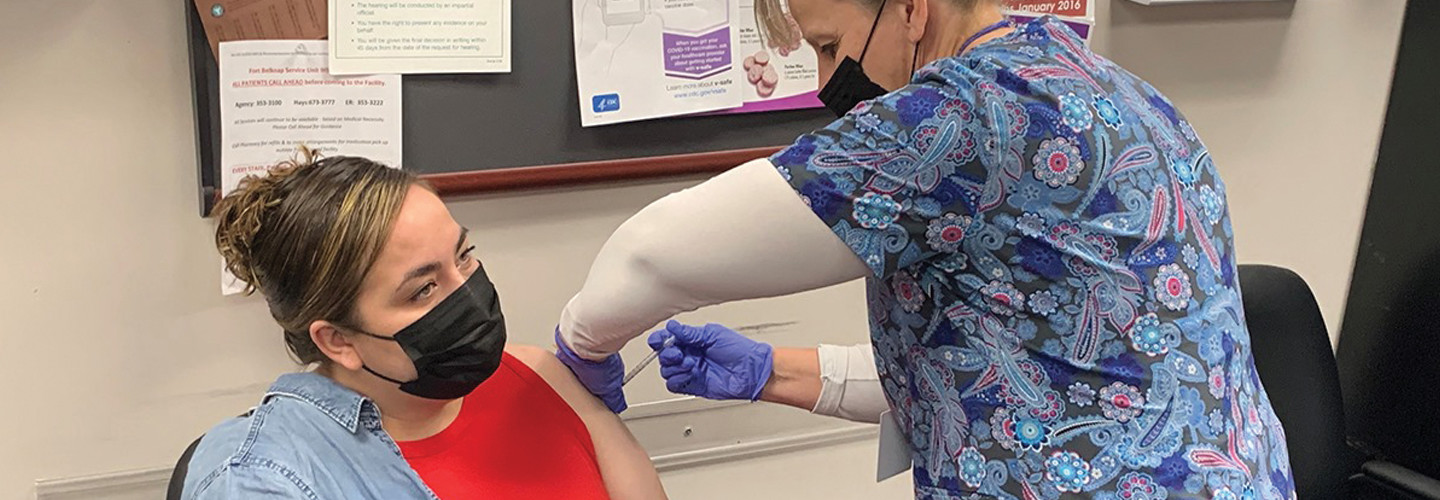New IT processes and initiatives took hold across government as agencies found ways to cope with the unique challenges of the COVID-19 pandemic, but many had to adopt solutions just to continue delivering their regular services amid office shutdowns, equipment shortages and other pandemic hurdles.
For instance, in April 2020, the Indian Health Service had to expand its small telehealth center to every provider within its network of 568 facilities to keep up with demand.
“We saw it going from a few hundred full-time remote workers to a couple of thousand,” says IHS CIO Mitchell Thornbrugh.
IHS also recognized early in the pandemic the need to detect where and how rapidly the disease was spreading to adjust services and staffing. In March 2020, it developed a national dashboard where healthcare providers could report COVID-19 test results.
“We could see trends with rising seven-day positivity, total number of cases,” Thornbrugh says. “That gave leaders the knowledge they needed to respond and prepare appropriately.”
DIVE DEEPER: Learn how the Energy Department coordinated efforts to conduct COVID-19 research.
Modernization Moved Quickly to Answer Providers’ Needs
Before the pandemic, IHS had embarked on a major multiyear modernization effort, and the demands from the pandemic accelerated those plans. IHS used $141 million in funding from the Coronavirus Aid, Relief and Economic Security Act and the American Rescue Plan Act to support local needs, such as increased circuits, wireless components and mobile devices.
For instance, some facilities expanded Wi-Fi to parking lots and gave tablets to patients’ families so they could speak to each other while buildings were under quarantine.
One need that became an immediate priority was the stabilization of the IHS Resource and Patient Management System (RPMS), the electronic health record platform used to track the medical histories of IHS patients.
The system is installed separately at each facility, and while they all use a common code base, each site configures the RPMS to meet its own needs, making troubleshooting difficult and affecting data integrity at the national level.
“We know that we have a multiyear modernization effort underway, but it could take as long as a decade, depending on funding levels,” Thornbrugh says. “Obviously, there were changes that needed to be made for the pandemic.”
Click the banner below to get access to a customized content experience and exclusive articles.
Pandemic Response Improves Healthcare for the Future
In addition to modifications to accommodate COVID-19 as a disease managed within the RPMS environment, IHS released patches to enable vaccine reporting through automated interfaces. It distributed 61 software releases between February 2020 and June 2021.
“This involved a lot of work in the field,” Thornbrugh says.
Because RPMS is installed at every facility, each had to adopt those changes and train users. In April 2020, IHS decided to replace its RPMS system rather than rewrite it. The pandemic, Thornbrugh says, “really emphasized our need to change and modernize as a whole.”
The new system, which will take several years to deploy, will improve record-keeping and disease tracing across the country for all types of patients and illnesses, even after the pandemic eases.
“Everybody did a great job ramping up to get the national dashboard in place, but that was a lot of local effort,” Thornbrugh says. “It was every hospital, every clinic having to verify numbers daily, having to reconcile changes if the data changed. We look forward to a time when data normalization — that kind of national reporting — will happen much more expediently.”
READ MORE: IHS CIO Mitchell Thornbrugh talks about the early days of RPMS modernization.






.png)



